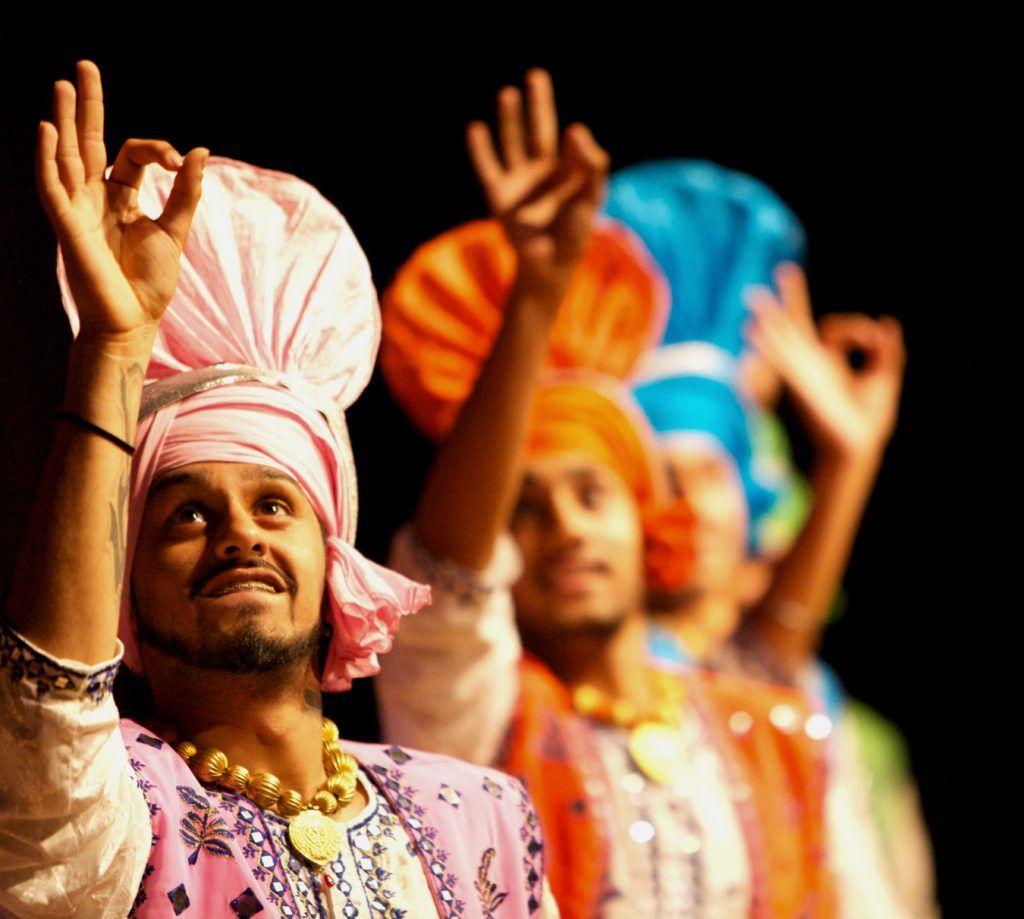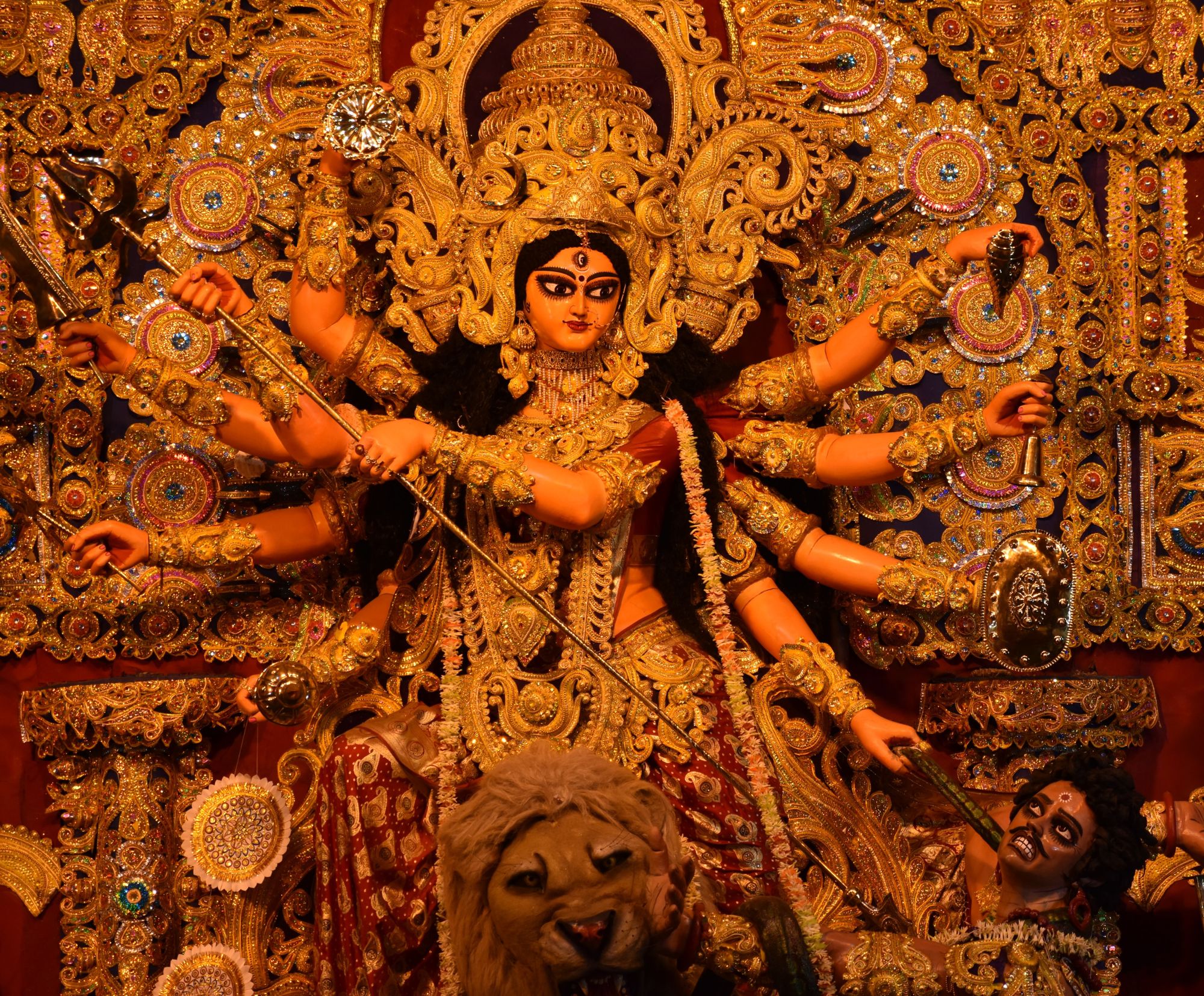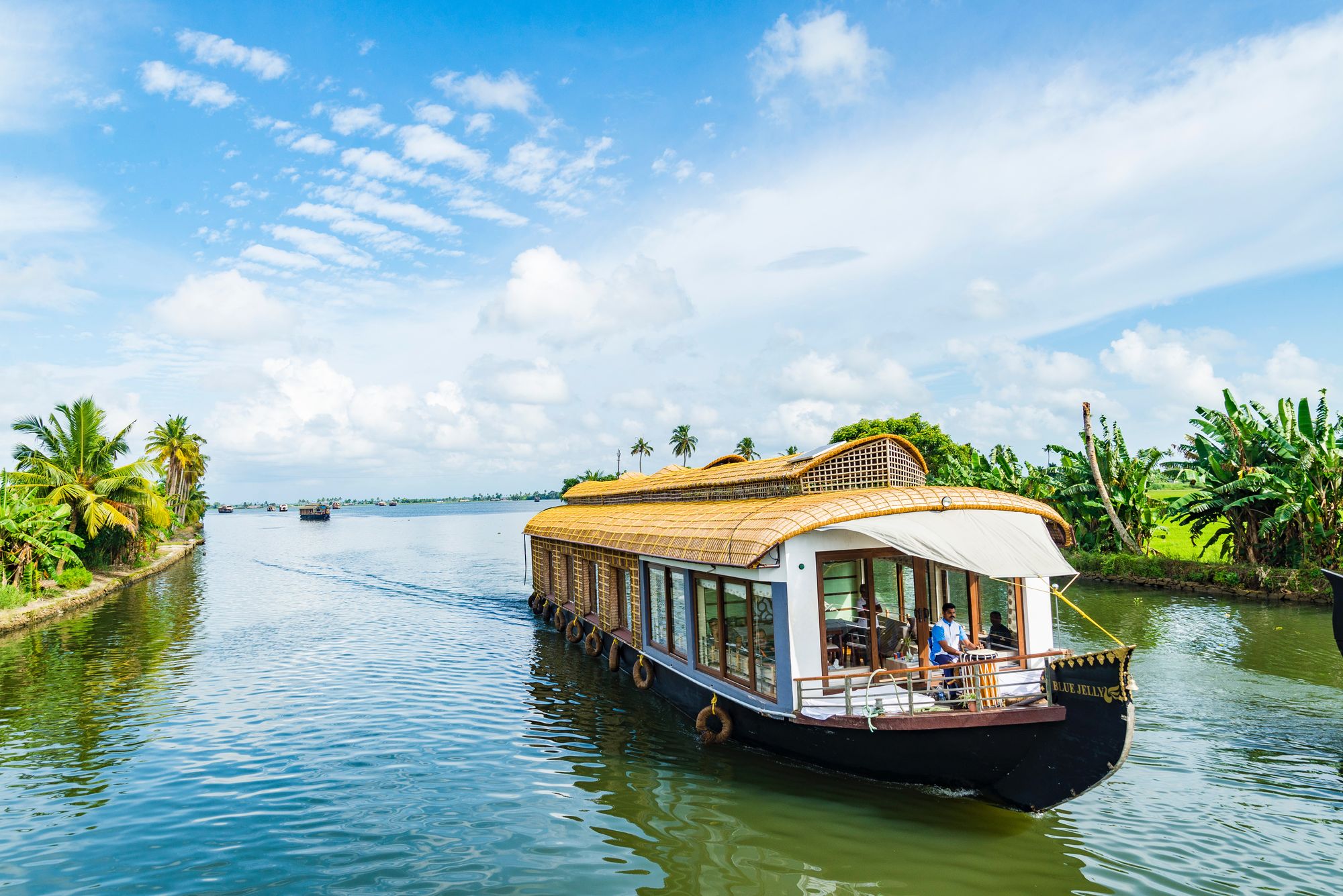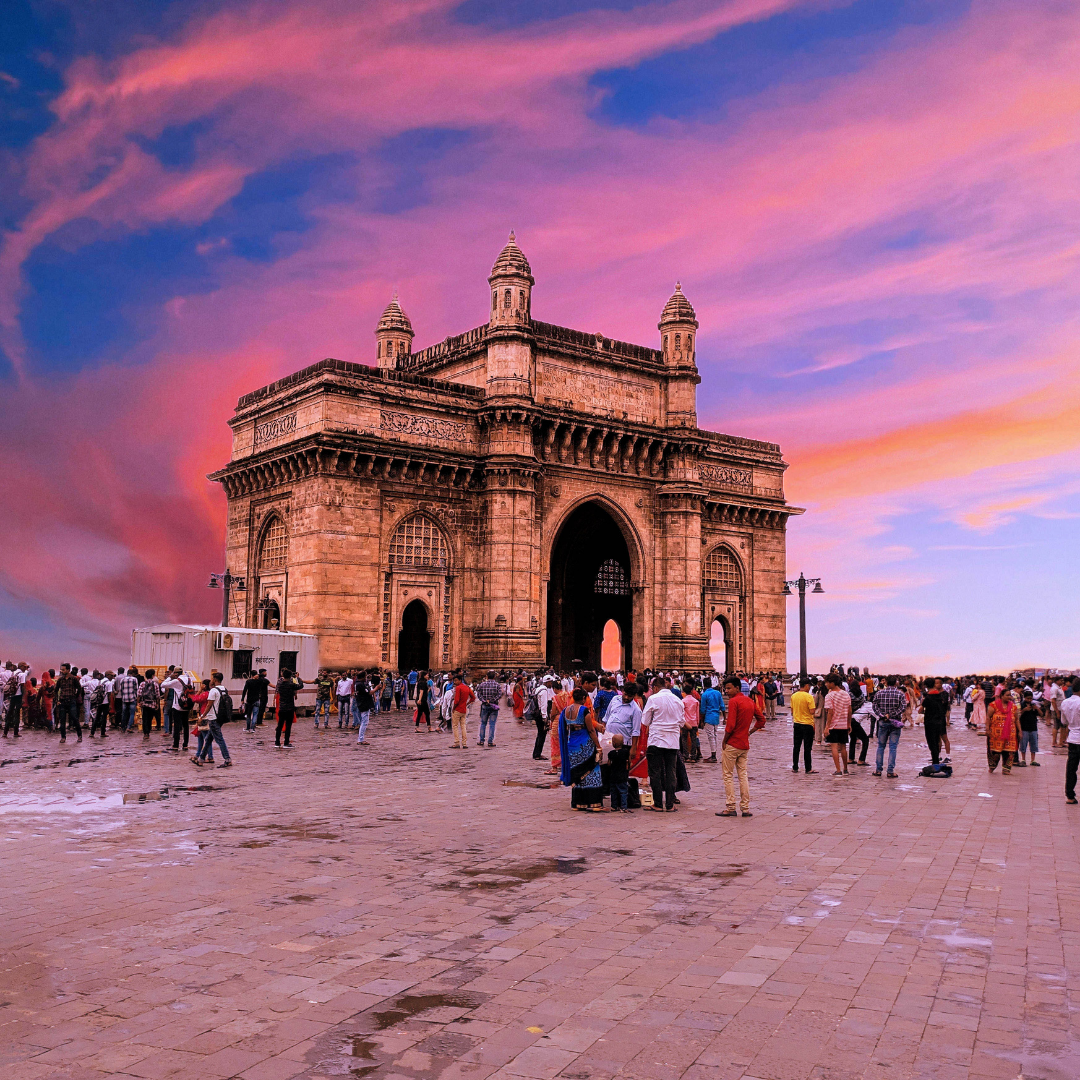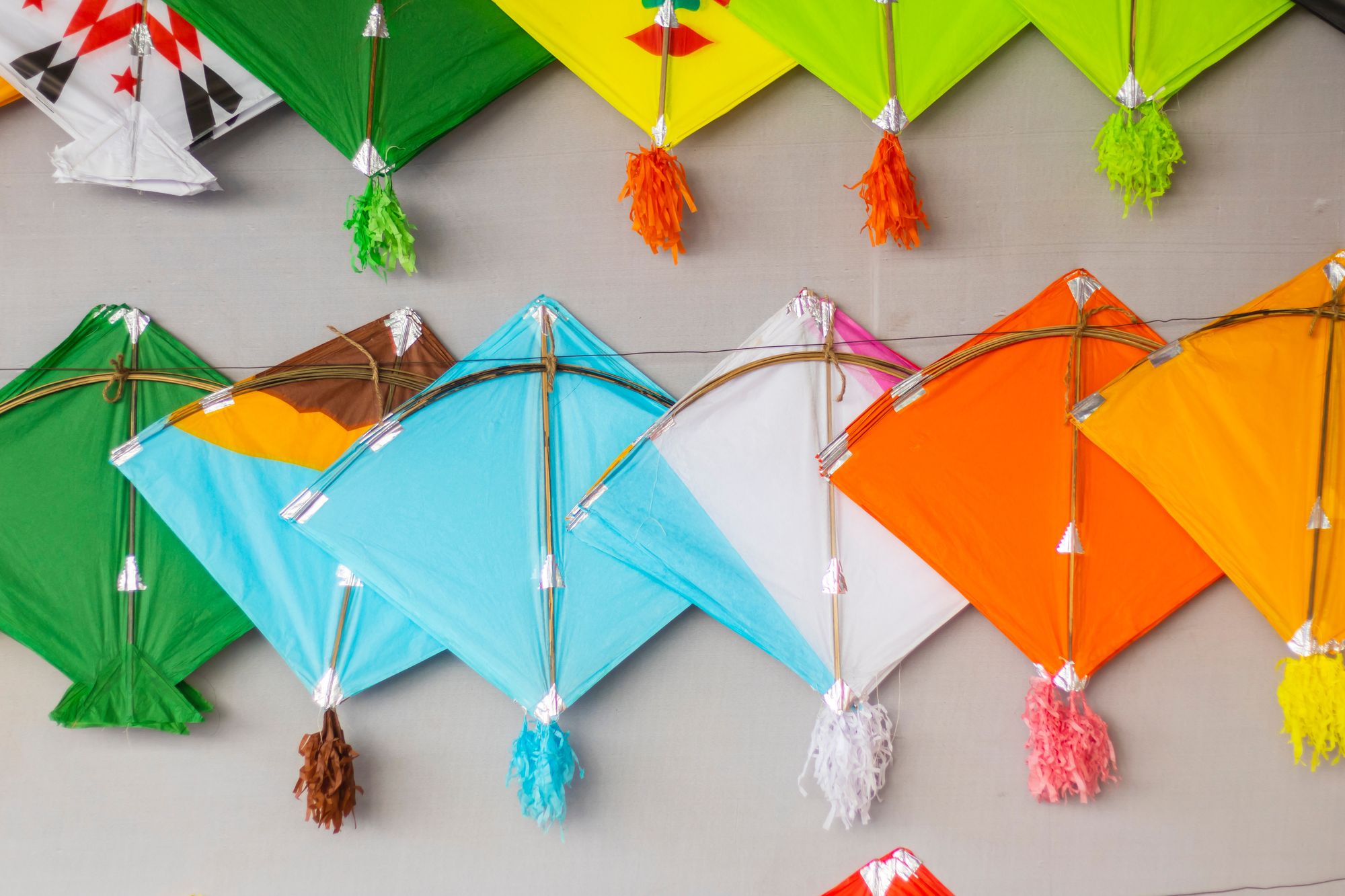It was on the second of January that we marked the calendar for 2022 for all the holidays of the new year. It is certainly our favorite thing to do. Be it to plan vacations or plan new ideas and activities at work. If you are in Sikkim and want to quickly learn about all the holidays you have this year, this article is just for you.
We have not only enlisted all the holidays, but learn with us a little about Sikkim and the various festivities all- in this article. Let’s get started!
This article covers the following:
- About Sikkim
- Sikkim holiday calendar 2022
- January 2022
- February 2022
- March 2022
- April 2022
- May 2022
- June 2022
- August 2022
- October 2022
- December 2022
About Sikkim
Sikkim, a beautiful state situated in northeast India. Sikkim is the smallest state in India. But is its greatness and contribution to the country limited to its size? Not really! First, let’s talk about the rich plants and animal life in Sikkim.
More than two-fifths of Sikkim is forested. You find Sal, pandanus, palms, bamboos, ferns, and orchids commonly in Sikkim. In the temperate forests, oak, laurel, maple, chestnut, magnolia, alder, birch, rhododendron, fir, hemlock, and spruce predominate. Alpine tundra replaces forest at the higher elevations.
Keeping in tune with the natural diversity, Sikkim has an equally rich and diverse demographic structure with a myriad of communities and religions and intricately knit colorful cultures.
The primary connecting factor is the warm, welcoming nature of the people everywhere. The phrase “Atithi Devo Bhava” finds its true meaning in Sikkim. Diverse rituals, songs, dances, traditional dresses, folklores, and legends fill-up the cultural canvas of the State.
The chimes of bells in the temples and the flutter of prayer flags in the monasteries create a feeling of righteousness and healing of spirit and soul. Feel rejuvenated, energized, and spiritually enlightened in this holy land.
Sikkim being this rich in rituals, communities, and celebrations, there is a long list of their holidays too that you can mark on your calendars as we take you through each one of them.
Sikkim Holiday Calendar 2020
Here is the long list of holidays in Sikkim you must make note of.
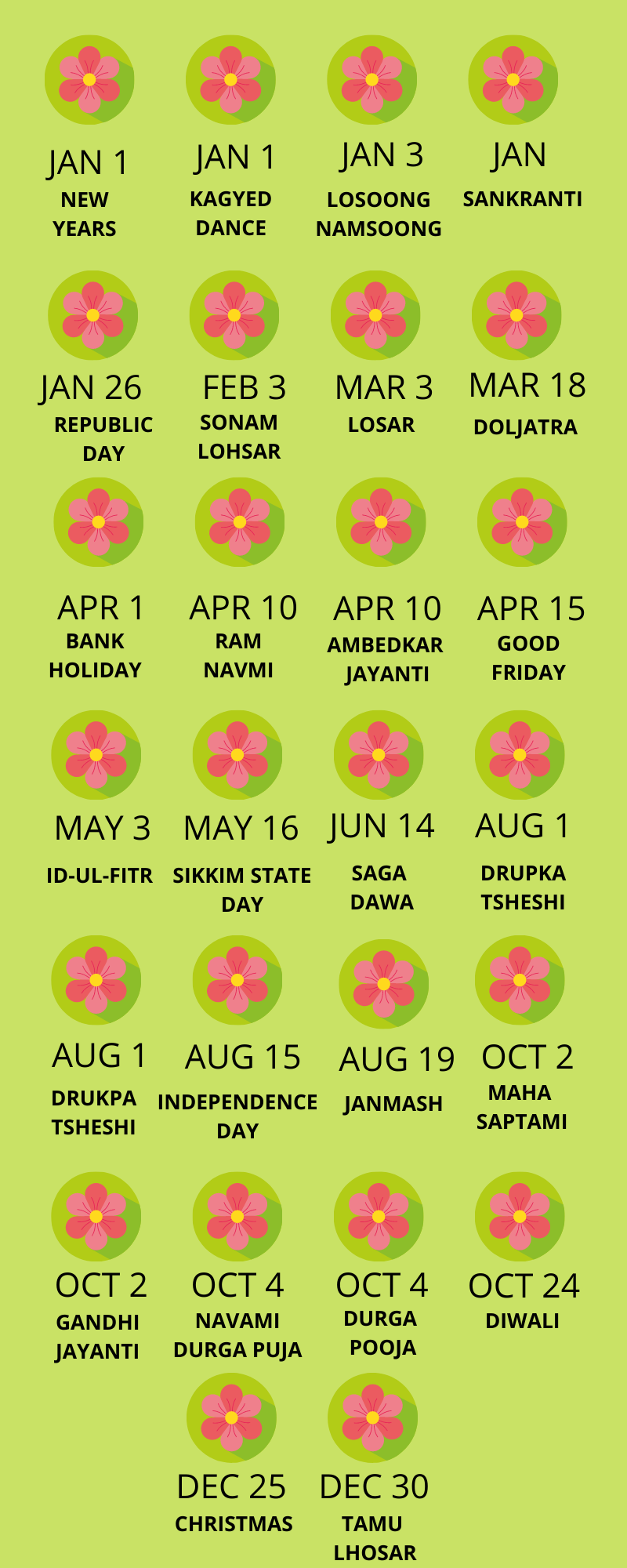
January 2022
Kagyed Dance- January 1st
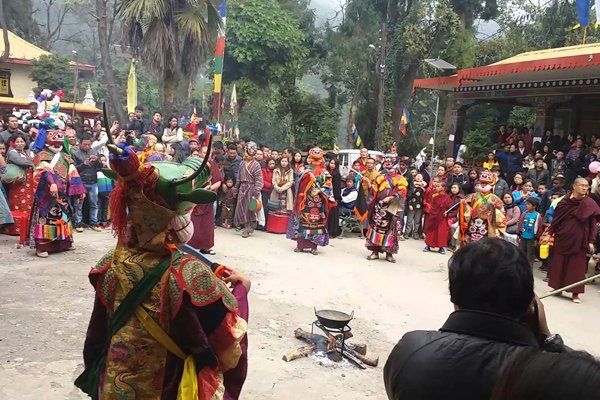
Kagyed or Kagyad is a Buddhist festival held in parts of northern India, particularly Sikkim. It is a regional public holiday in the state of Sikkim. One of the most popular Buddhist festivals, Kagyed Chaam, is a celebration marked by masked monks performing some rigorous dance moves, symbolizing the destruction of all the evil and negative forces, thereby bringing peace and prosperity for one in the upcoming new year.
Various important scenes from Buddhist mythology are enacted during this dance, which eventually comes to a close by burning off effigies made with flour, wood, and paper.
The festival is not only held in high regard by the locals but also by international tourists who believe in the teachings of Buddha and find seeing this dance as an eternal blessing.
Several variants of these cham dances are performed on different festivals, with one thing remaining common in all, i.e., the masks representing scores of human, deities, and animal faces enacting an exciting story from the Buddhist mythology.
New Year’s Day- January 1st
New Year's Day is the first day of the year in the Gregorian calendar and falls exactly one week after the Christmas Day of the previous year.
New Year's Day is a public holiday in all countries that observe the Gregorian calendar, with the exception of Israel. This makes it the world's most widely observed public holiday.
Some countries may also have January 2nd as an additional New Year holiday. It is such a part of our lives, that it might be surprising to learn that celebrating the first day of the new year on January 1st is a relatively modern practice
Losoong/Namsoong- January 3rd to January 7th
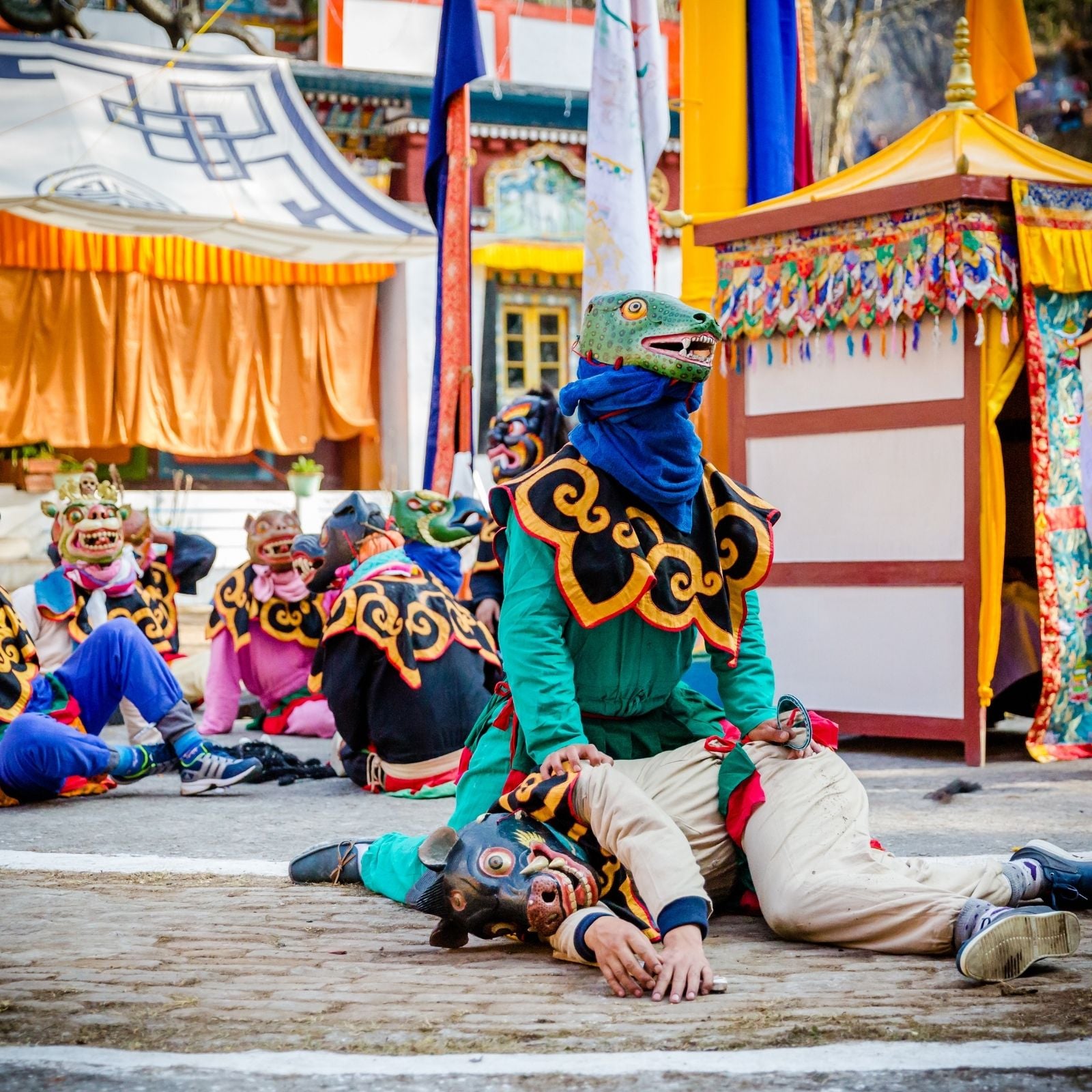
Losoong (Namsoong) is a series of gazetted public holidays in the Indian state of Sikkim. It begins on the first day of the the10th month of the Tibetan Lunar Calendar - the new moon of the "Kurneet Lovo," according to Dungkit Karchu (Lepcha Calendar). This means it usually falls in December on the western calendar.
The festival of Lossong is celebrated with traditional gaiety and color both by the Lepchas and Bhutias. On this occasion, pujas are performed for peace and prosperity for the new year. Certain competitions are also held in traditional skills, such as archery, and the merry-making will continue for days.
Sonam Losoong (Farmers' Harvest) is a New Year celebration of the Sikkimese Bhutia. It is called Namsoong by the Lepchas. The festival marks the time when the farmers rejoice and celebrate their harvest.
Although the festival is celebrated privately among family members and friends, there is an air of festivity. The Black Hat dance takes place at this festival commemorating the victory of good over evil, with ‘charms’ held in many monasteries two days before Losoong.
Sankranti- January 15th
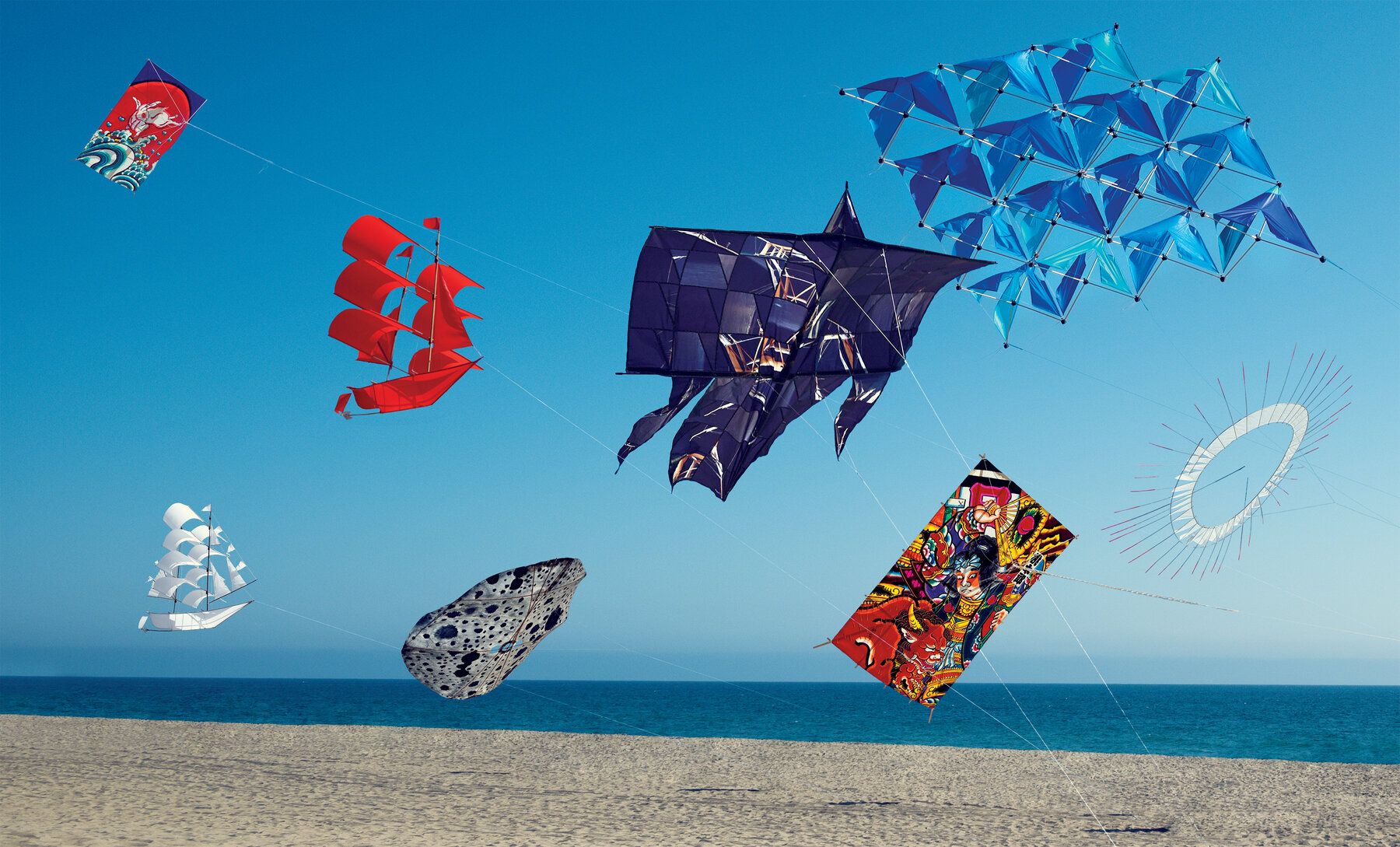
This famous Hindu festival occurs on or around January 14th across India. Various names know the day, and there is a variety of different customs observed in the different Indian states.
Despite these variations, it is a harvest and thanksgiving festival marking the start of spring, the end of the traditional farming season, and gathering the first food from the harvest. It is unique among Hindu festivals as the date is based on a solar calendar rather than the moon's phases.
This means it falls on January 14th in the western calendar. This date marks the start of Uttarayana, the time when the sun starts to move northwards after the winter equinox. Sankranti is popularly celebrated in Maharashtra, Uttar Pradesh, Tamil Nadu, Andhra Pradesh, Gujarat, and Karnataka, along with Sikkim.
Republic Day- January 26th
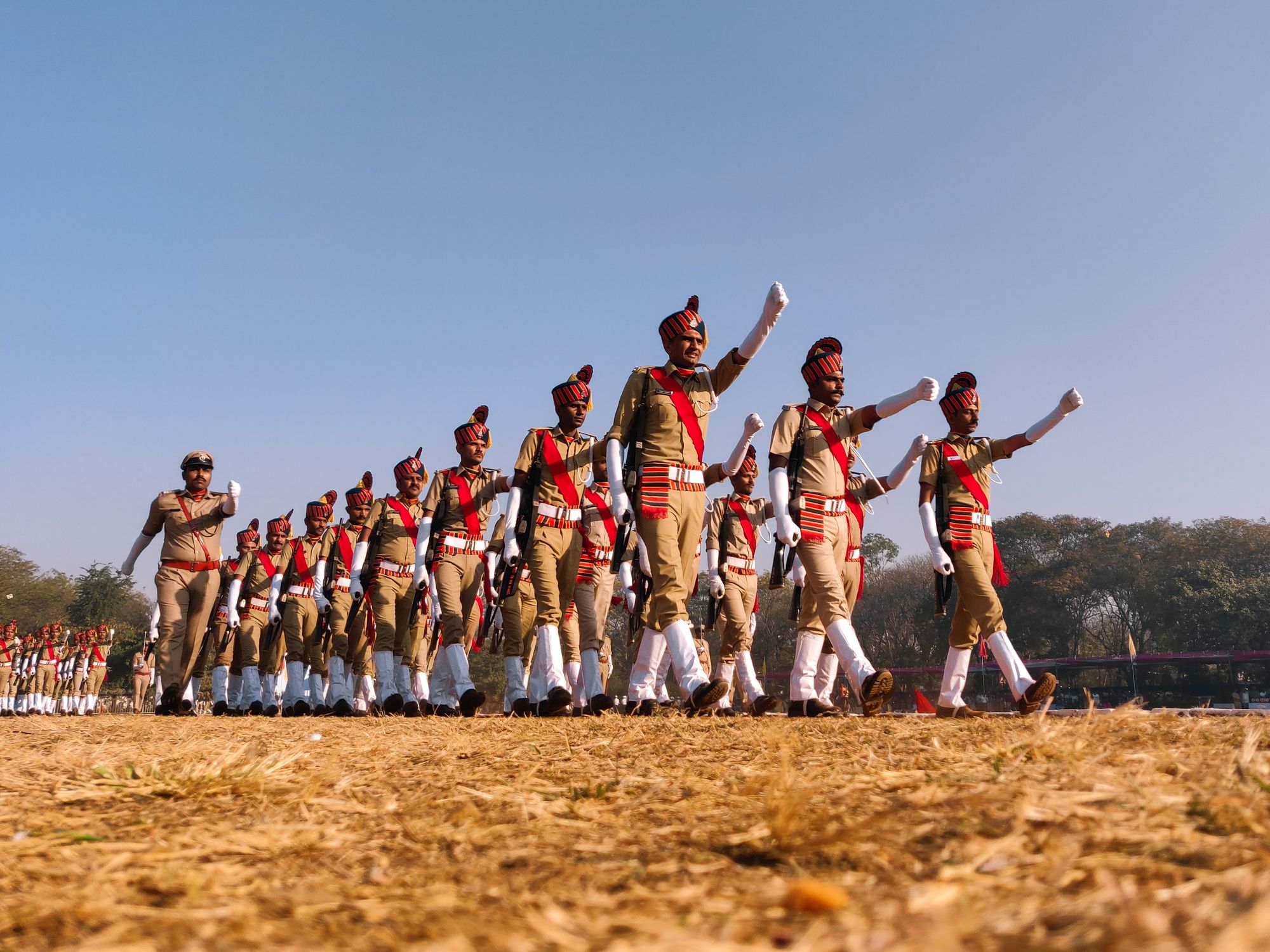
On January 26th, India celebrates Republic Day, aka R-Day. This public holiday is one of four national holidays and is always celebrated on this date. Republic Day is an important national holiday that commemorates the establishment of the Constitution of India.
The adoption of the constitution on January 26th, 1950, marked the transition to full independence from Britain as it ended Lord Mountbatten's role as governor-general of India.
The Drafting Committee, headed by Dr. BR Ambedkar, took around two years and 11 months to put together the Indian Constitution. Republic Day has been marked by parades, patriotic songs, exhibitions, and fun, celebrating the cultural unity of India since 1950, when it was first officially celebrated.
The Republic Day parade’s preparations begin in July when all of the participants are officially notified of their participation. They will practice parades at their respective places till August. They come to rehearse at the event in December. Before the official event begins, the participants will have already trained for 600 hours.
February 2022
Sonam Lhosar- March 3rd
Sonam Lhosar is celebrated on the first day of the new moon during the month of Magh in the Bikram Sambat calendar. This holiday is known as Sonam Lohosar in Nepal and Sonam Lochar in Sikkim.
It may be celebrated on a different day in India and Nepal, depending on how the lunar calendar is interpreted. The word Lhosar means New Year or the beginning of a new era, and Sonam Lhosar is the Tamang New Year.
Tamangs are indigenous people from Nepal. They have their own culture and dialects that distinguish them from other ethnic groups. Tamang means Horse Traders.
The festival also sees Tamangs display their cultural heritage by engaging in traditional music and dance performances. Tamang Selo, a special group dance of the community, is performed with great enthusiasm.
Many of the dances are performed to the beat of the damphu, a traditional drum. The songs are sung on the occasion only of the Tamang community. These songs are also called Hwai, according to the official website of the Sikkim government.
Any celebration is considered incomplete without these songs. The Tamangs clean and decorate their house to welcome the new year. They will visit monasteries and stupas in their traditional costumes in the new year.
Buddhist monks perform masked dances and rituals to drive away negative forces and bring positivity to the family and the people. The stupas, monasteries, houses, rooftops, and mountain tops are adorned with colorful prayer flags and decorative items to bring peace and harmony.
March 2022
Losar- March 3rd
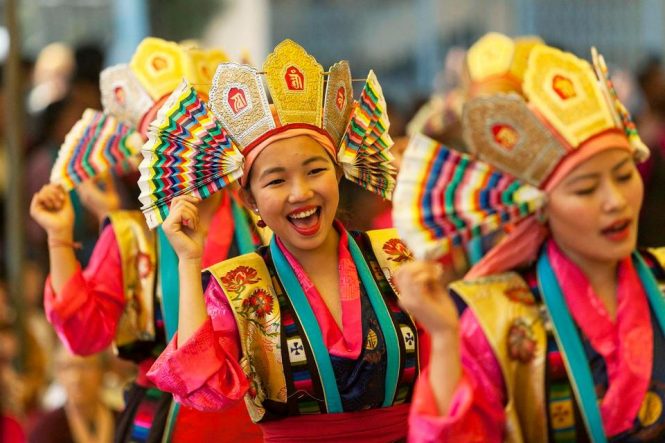
Losar is Tibetan New Year and marks the start of the Tibetan year which is based on a 12 lunar month calendar. The day it falls is very close to the date of the Chinese New Year. The date each year is determined by astrologers based in Dharmsala, India.
The Tibetan calendar is in use throughout the Himalayan region, and the New Year is a public holiday in Tibet, Nepal, and Bhutan. It is a regional holiday in the state of Sikkim in India. Losar means New Year (lo - year, sar - new) in Tibetan. It is the most important festival in the Tibetan calendar.
On Tibetan New Year's Eve, a custom is making a special noodle dish called guthuk. In the dish are dumplings with different ingredients inside them. Finding a certain ingredient is a light-hearted omen for the coming year.
Finding a white-colored ingredient such as rice or salt is considered a good omen; finding a pebble means good luck; finding a chili means the person is talkative and finding a black ingredient means you have are 'black-heated.' Interestingly, finding coal in your presents in some European Christmas customs means the same thing.
On Tibetan New Year's Eve, the monks do a protector deities' puja (ceremony) to drive out evil spirits. And begin preparations for the Losar celebrations. On the first day of the new year, people rise early and place water and offerings on their household altars to ensure a good harvest.
Doljatra aka Holi in Some States- March 18th
The Hindu 'festival of colors', Holi, is celebrated on the last full moon day of the Hindu lunisolar calendar month, which usually falls in early March. Holi is also known in some states as Doljatra or Dola Purnima. In Nepal, it is known as Fagu Purnima.
It is also a public holiday called Phagwah in the South American countries of Guyana and Suriname. The day before Holi is known as Holi Dahan and can be a holiday in some states.
Holi was originally a festival to celebrate the start of Spring, good harvests, and fertility of the land. The first mentions of it date back to a poem from the 4th century.
Holi was described in a 7th century Sanskrit play called "Ratnavali," written by the Indian emperor Harsha. Holi is marked by colorful parades accompanied by folk songs, dances, and a general sense of relaxed fun.
Nowadays, Holi is an excuse for young Indians to shed their inhibitions and caste differences for a day of fun. Teenagers spend the day flirting and misbehaving in the streets, and everyone chases everyone else around, throwing brightly colored powder and water over each other.
During Holi, it’s all about sweet treats, presumably to keep up everyone's energy with all that powder throwing. To fuel the revelers, big batches of desserts are served up, such as Gujiya, flaky pastry parcels filled with dried fruit, served with the sugar syrup; malpua, deep-fried mini pancakes; and thandai, a sweet, milky drink flavored with the likes of cardamom, saffron, fennel seeds, and rosewater.
April 2022
Bank Holiday- April 1st
Bank holiday is not a public holiday. It is only limited to the people working in the bank.
Ram Navami- April 10th
Ram Navami is a Hindu festival celebrating the birth of Lord Rama to King Dasharatha of Ayodhya. It is celebrated on the ninth day of Chaitra month (the first month in the Hindu lunar calendar).
It marks the culmination of the spring festival of Vasanta Navratri (Chaitra Navratri) which begins on Ugadi. Ram Navami is a gazetted holiday in several Indian states but may be celebrated on different days.
Rama was the seventh incarnation of Vishnu. He was the hero of the Ramayana, the ancient Sanskrit epic. A continuous recital of the book takes place during the month of Chaitra prior to the celebration.
On Ram Navami itself, the highlights of the story are read in the temple. Houses are thoroughly cleaned on Rama Navami, and a family shrine may be decorated with small statues of Rama.
Offerings of flowers and fruit are placed on the shrine, and prayers are recited after an early bath. To mark the day, followers of Hinduism may fast or restrict themselves to a specific diet and won't eat certain foods like onions, garlic, and wheat products.
The celebrations at key places associated with Sri Rama, such as Ayodhya in Uttar Pradesh and Rameswaram in Tamil Nadu, can attract thousands of devotees. In some parts of India, there is a tradition of tying an earthen pot full of money on top of a tree, and local youths form teams to try and claim the pot.
Dr. Ambedkar Jayanti- April 10th
Ambedkar Jayanti is a regional holiday always observed on April 14th. However, in some states, not all companies and organizations will observe it as a holiday. In the Indian state of Uttar Pradesh, December 6th, the date of Dr. Ambedkar's death, is a public holiday.
It is celebrated to mark the birthday of Dr. Babasaheb Ambedkar, an Indian jurist, politician, philosopher, anthropologist, historian, and economist who was the principal architect of the Constitution of India.
Ambedkar was the first untouchable of India to pursue a college degree. He earned a law degree and doctorates for his studies in law, economics, and political science, gaining a reputation as a scholar and campaigning for political rights and social freedom for the lowest in the caste system, untouchables.
He led a march at Mahad, Maharashtra, that eventually helped establish equal rights for untouchable people who were not allowed to touch or taste the water of Chawdar Lake.
On Ambedkar Jayanti, it is a custom that the President, Prime Minister, and leaders of other parties pay homage to his statue at the Parliament, New Delhi.
Here are some of his famous quotes:
- I have always held that Knowledge is Power in every field of life. The Scheduled Castes will not attain their goal of freedom and liberty until they drink deep of all knowledge.
- The constitution is not a mere lawyer's document, it is a vehicle of life, and its spirit is always the spirit of the age.
- Cultivation of the mind should be the ultimate aim of human existence.
- For a successful revolution, it is not enough that there is discontent. What is required is a profound and thorough conviction of the justice, necessity, and importance of political and social rights.
- A people and their religion must be judged by social standards based on social ethics. No other standard will have any meaning if religion is held to be necessary and good for the well-being of the people.
Good Friday- April 15th
Many countries observe Good Friday as a national holiday on the Friday before Easter. The day commemorates the crucifixion and death of Jesus Christ. Some countries observe the Orthodox calendar in which Good Friday may occur on a different date.
The most important events in Christianity are the death and later resurrection of Jesus Christ, who Christians believe is the Son of God, and whose life and teachings are the foundation of Christianity.
After the last supper, Jesus was arrested in the Garden of Gethsemane, put on trial, and sentenced to death. He was then tied and nailed by the wrists and feet to a large wooden cross and left to die. This is why the cross is used as a symbol of the Christian faith.
Good Friday is a day of mourning. During special Good Friday services, Christians meditate on Jesus's suffering and death on the cross and what this means for their faith.
Many Church services are held in the afternoon, usually between noon to 3 pm, to remember the hours when Jesus was crucified on the cross. Some churches observe the day by re-enacting the process of the cross in the rituals of stations of the cross, which depicts the final hours of Jesus' life.
Other churches may participate in Veneration of the Cross, a short ceremony in which Christians kneel before the cross and affirm their faith. In Jerusalem, Christians follow in Jesus' footsteps and walk Via Dolorosa, the traditional path that led to the site of the crucifixion.
Many who participate try to ritually bear the same weight Jesus did by carrying crosses on their backs. Though it's not a public holiday in the Vatican or Italy, the Pope will say a mass at the Vatican before leading an annual public prayer of the Stations of the Cross at the Colosseum in Rome. A procession is then made to the Palatine Hill, accompanied by a huge cross covered in burning torches.
May 2022
Id-ul-Fitr- May 3rd
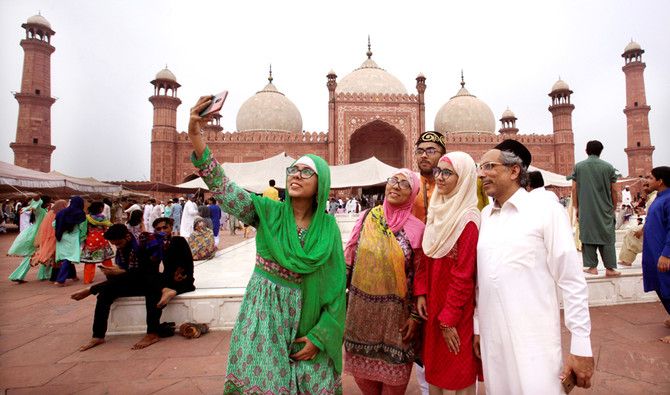
In India, this festival is known by different names in some states and is a holiday in all states except Goa, Jharkhand, and Uttar Pradesh. The festival of Eid al-Fitr, the Festival of Fast-breaking, is an important religious holiday celebrated by Muslims worldwide that marks the end of Ramadan, the Islamic holy month of fasting.
The holiday celebrates the conclusion of the 29 or 30 days of dawn-to-sunset fasting during the entire month of Ramadan. As the date of Eid depends on the sighting of the moon, there may be variations in the exact date that is celebrated around the world.
The announcement of the exact dates of Eid Al-Fitr may not happen until close to the start of Ramadan. Eid al-Fitr is often called the “Festival of Breaking the Fast.” The practice of dawn-to-sunset fasting during the holy month of Ramadan ("Sawm") is one of the five pillars of Islam. Muslims believe that it was during the month of Ramadan that the text of the Qur'an was revealed to the Prophet Muhammad.
Muslims celebrate Eid Al-Fitr with prayers called "Salat Al Eid" in Arabic. There is no audible call to prayer for the Eid prayers. Muslims will gather in mosques or open spaces and offer two units of prayer called "Rakat."
The prayers are followed by a sermon, in which the imam asks for forgiveness, mercy, and peace for every being across the world. It's a tradition to wear new clothes and on the way to the mosque, eat something sweet such as a date, and recite a small prayer called a takbeer.
Other key elements of the Eid celebrations are giving money to the poor (known as 'Zakat al-Fitr', the amount to be given depends on the possessions someone has), sending Eid greetings, and feasting with families.
For many Muslims, Eid al-Fitr is a festival to show gratitude to Allah for the help and strength he gave them throughout the month of Ramadan to help them practice self-control.
Sikkim State Day- May 16th
This state holiday in Northeast India is observed on May 16th. It marks the day in 1975 when Sikkim became the 22nd state of India. The Kingdom of Sikkim dates back to the 17th century when the Namgyal dynasty founded it.
It was ruled by a monarchy of Buddhist priest-kings known as Chogyal. Sikkim became a principality within British India in 1890. After India and Pakistan's independence in 1947, Sikkim continued to have protectorate status within the Republic of India.
In 1975, growing unrest against the rule of the Chogyal, including a direct appeal from the Sikkim Prime Minister for Indian help, led to the Indian military deposing the Chogyal and abolishing the Sikkimese monarchy.
A referendum was then held in which 97.5% of voters supported the abolition of the monarchy and led to Sikkim joining India as its 22nd state. Nestled within the Himalayas, Sikkim is the least populous and second smallest of all Indian states. The peak of India's largest mountain, Kangchenjunga - the world's third-highest peak - lies within Sikkim.
June 2022
Saga Dawa- June 14th
Saga Dawa Düchen (Düchen means "great occasion") commemorates the birth, enlightenment, and parinirvana of Buddha's perfect and supreme teacher Shakyamuni. In other Buddhist traditions, this occasion is known as Buddha Purnima or Buddha Day.
It may be celebrated on a different date than Saga Dawa as it is based on a different lunar calendar. Buddha Purnima is the most sacred day in the Buddhist calendar.
It is the most important festival of the Buddhists and is celebrated with great enthusiasm. Followers of Buddhism have been celebrating Buddhist festivals for centuries, but the decision to celebrate this day formally was only taken at the first conference of the World Fellowship of Buddhists held in Sri Lanka in 1950.
Buddha Purnima, also known as Buddha Day, Vesak, or Buddha Jayanti, is a very popular festival in India and is much more than just a gazetted holiday. The day is celebrated by both Hindus and Buddhists.
The festival holds special importance in Nepal and India, both as Lord Buddha was born in the Lumbini region of Nepal, and he attained salvation in Kushinagar of India.
In Hinduism, Lord Buddha is considered the eighth reincarnation of Lord Vishnu, and hence the day is celebrated with great zeal and much fervor. In India, Buddha Purnima is a holiday in Andaman and Nicobar, Arunachal Pradesh, Tripura, Assam, Bihar, Chhattisgarh, Delhi, Himachal Pradesh, Jammu and Kashmir, Madhya Pradesh, Maharashtra, Mizoram, Uttarakhand and Uttar Pradesh.
August 2022
Drupka Tsheshi- August 1st
Formally known as Drukpa Tshe Zhi, the Anniversary of the First Sermon of Lord Buddha is a non-working public holiday in the Kingdom of Bhutan on the fourth day of the sixth month in the Bhutanese calendar.
After achieving enlightenment, Buddha gave his first sermon in the Deer Park in Isipatana, India and founded the Buddhist sangha (monkhood) about 2,500 years ago.
In His First Sermon, the Buddha said, "I teach one thing and one thing only: suffering and the end of suffering,” which is the ultimate goal of Buddhism. The Buddha presented and explained this very doctrine in his major discourses.
In this First Sermon at Deer Park, He taught the Four Noble Truths: the existence of suffering, the cause of suffering, that the cause of suffering can end, and the path to the end of suffering.
Independence Day- August 15th
Indian Independence Day is always celebrated on August 15th. It is the National Day of India. Also known as 'I-Day,' this public holiday marked the date in 1947 when India became an independent country.
This holiday is a dry day in India when the sale of alcohol is not permitted. On this day, the Prime Minister of India will host the tricolor at Red Fort before addressing the nation from the ramparts.
On Independence Day, the flag is hoisted, which is to say it is kept folded somewhere in the middle of the flag pole and is pulled up to the top and unfurled. The other public holiday in India is January 26th, India’s Republic Day.
On this day, the President of India unfurls the flag on Rajpath before presiding over a parade that showcases India’s military might and cultural diversity. On this day, the tricolor isn’t hoisted; it is merely unfurled.
It is folded up and rests on top of the flag pole, unlike on August 15th, when it is in the middle before being unfurled.
Janmashtami- August 19th
Janmashtami is a Hindu festival and a Gazetted holiday in many regions of India. It may be known as Gokulashtami or Sreekrishna Jayanthi in some regions. According to the Hindu calendar, Janmashtami is celebrated on the Ashtami (eighth day) of Krishna Paksha (dark fortnight) in the month of Shravana or Bhadra (in the Hindu calendar, there is a leap month once every three years).
In India, it is a Gazetted holiday in Bihar, Chandigarh, Chattisgarh, Delhi, Gujarat, Haryana, Jammu, and Kashmir, Jharkhand, Mizoram, Madhya Pradesh, Nagaland, Orissa, Punjab, Rajasthan, Sikkim, Tamil Nadu, Uttar Pradesh, and Uttarakhand.
Janmashtami is celebrated with great enthusiasm by Hindus across the Indian subcontinent and beyond. In "A Janmashtami Journey," we take a whistle-stop tour around the world to look at how this great festival is celebrated.
In countries like Singapore, Malaysia, Canada, and New Zealand, where there is a large community of Hindus, Janmashtami is celebrated. The day is marked with great fanfare and fervor in London, the US, and Poland, and there is a unique temple in the Macau peninsula.
October 2022
Maha Saptami- October 2nd
Maha Saptami is the seventh day of Durga Puja celebrations. Maha Saptami is also known as Saptami of Durgapuja and is one of the important days of Durga Puja. The Maha Puja (Great Ceremony) starts on Maha Saptami.
Durga Puja is a Hindu festival in South Asia that celebrates the worship of the goddess Durga. Durga Puja celebrates the ten-armed mother goddess and her victory over the evil buffalo demon Mahishasura.
The rituals of Durga Puja last ten days with the start and the last five days being special festivals that are reflected in public holidays in some states in India.
Mahalaya
Mahalaya marks the start of the Durga Puja festival.
Durga Ashtami
This is the eighth day of the Durga Puja celebrations when the weapons used by Durga are worshipped.
Maha Navami
This is the ninth day of Durga Puja. On this day, the victory of Durga over the evil buffalo demon Mahishasura is celebrated.
Vijaya Dashami
Also known as Dashain or Tenth day of Navratri or Durgotsav, Vijaya Dashami commemorates the day that Durga appeared riding a lion to slay the Mahisasura.
Gandhi Jayanti- October 2nd
Gandhi Jayanti is a national holiday celebrated across India to mark the birthday of the great Indian freedom fighter Mahatma Gandhi, known by many Indians as the "Father of the Nation."
It is celebrated on October 2nd every year. It is one of three official declared National Holidays of India and is observed in all its states and territories. The day is marked by prayer services all over India, especially at Raj Ghat, Gandhi's memorial in New Delhi where he was cremated.
Celebrations on the day include prayer meetings and commemorative ceremonies in various cities by colleges, local government institutions, and socio-political institutions.
Painting and essay competitions are held, and awards are announced for projects in schools and the community on the themes of glorifying peace, non-violence, and Gandhi's effort in the Indian Freedom Struggle.
Often Gandhi's favorite devotional song, Raghupathi Raghava Rajaram, is sung in memory of him. This holiday is a dry day in India when the sale of alcohol is not permitted.
Durga Ashtami- October 3rd
Durgastami, Mahashtami, or Durga Ashtami; this is the eighth day of Durga Puja celebrations. Durga Ashtami falls on the Ashtami tithi of Chaitra month in the Hindu calendar
Durgastami is one of the important days of Durga Puja, and many people may fast on this day. Durga Puja is a Hindu festival in South Asia that celebrates the worship of the goddess Durga.
Durga Puja celebrates the ten-armed mother goddess and her victory over the evil buffalo demon Mahishasura. The world was under threat from the evil buffalo demon Mahishasura that no man or god could defeat.
To vanquish the demon, Durga emerged from the collective energies of all the gods. Each of her ten arms brandished the deadliest weapon of each god.
Mahalaya
Mahalaya marks the start of the Durga Puja festival.
Maha Saptami
On the seventh day (saptami) of Durga Puja, the goddess started her epic battle against Mahishasura.
Vijaya Dashami
Also known as Dashain or Tenth day of Navratri or Durgotsav, Vijaya Dashami commemorates the day that Durga appeared riding a lion to slay the Mahisasura. Statutes of Durga are paraded through the streets, then immersed in water.
Navami of Durga Puja- October 24th
Maha Navami is the ninth day of the Durga Puja festival. It is the final day of worship before Vijaya Dashami, the end of Navratri. In India, Maha Navami is a public holiday in several states.
In South India, Maha Navami may be observed as Ayudha Puja or Astra Puja. On this day, the goddess Durga is believed to finally defeat the evil buffalo demon Mahishasura.
To mark her victory, the goddess Durga is worshipped as Mahisasurmardini. Devotees of the goddess will pray to Durga for prosperity and good health. In West Bengal, Odisha, Assam, Bihar, Jharkhand, and Tripura, the puja is celebrated with great enthusiasm. Some believe that puja done on this day is equal to all the puja done during all the other days of Navratri. Huge crowds gather to offer prayers, enjoy festive treats, and participate in cultural events.
Durga Puja- October 4th
In India, Durga Puja is a public holiday in several states. The names and dates may differ, and some states observe holidays related to the festivals of Dussehra and Navrati which are celebrated on similar dates.
Durga Puja, also known as Durgotsava or Mahashtami, is a Hindu festival in South Asia that celebrates the worship of the goddess Durga. Durga Puja celebrates the ten-armed mother goddess and her victory over the evil buffalo demon Mahishasura.
While celebrated across India, In West Bengal, Assam and Tripura, it is the biggest festival of the year and the most significant cultural event in Bengali Hindu society.
Diwali- October 24th

The Festival of Lights is known as Deepavali (deep-lamp, vali - array). This is the name of the festival in Southern India and is how the festival is referred to in other Asian countries such as Malaysia and Singapore. In Northern India, it is more commonly known as Diwali, but they are essentially the same celebration.
Diwali marks the return of Lord Rama, who was the seventh incarnation of Vishnu, from a fourteen-year exile. Across India, streets and temples are decorated with spectacular light displays and colorful garlands.
In their homes, people light small oil lamps called diyas. It is believed that deceased relatives come back to visit their families on Earth during this festival, and the lights are a way to guide the spirits home. The sound of firecrackers exploding is common as the noise is said to drive away evil spirits.
Diwali is a five-day festival that straddles the new moon. Though widely celebrated across all of India, the days may have different names and have additional meanings in some parts of India, but there is enough commonality to briefly describe each of the days:
Dhanteras
Dhanteras marks the beginning of the five-day festivities of Diwali. On this day, it is customary for people to clean their houses, so they are ready to welcome in Lakshmi, the Goddess of Wealth and Prosperity, whose Puja is performed in the evening.
Naraka Chaturdashi
According to Hindu tradition, the demon Narakasura was killed by Lord Krishna on the second day. Marking the coming end of the year in some regions of India, customs on this day are about cleaning the slate before the start of a new year and getting rid of anything bad.
Balipadyami
The fourth day of Diwali, is also the first day of the new year in the Vikram Samvat calendar and may also be known as Pratipada, Govardhan Puja, or Annakut. Annakut means 'mountain of food,' a giveaway that today is all about feasting.
Bhai Bij
This is the fifth and last day of the Diwali festival. This day celebrates the relationship between brother and sister.
December 2022
Christmas- December 25th
On this day, over two billion people (over a third of the world's population) will celebrate the birth of Christ.
Christmas Day celebrates the Nativity of Jesus which according to tradition took place on December 25th, 1 BC. December 25th will be a public holiday in most countries around the world.
Whilst the holiday has a strong grounding in the story of the birth of Jesus, many of the traditions we associate with Christmas have evolved from pre-Christian beliefs, and certainly, the traditions have evolved beyond purely a Christian holiday to have a wider secular significance.
Tamu Lhosar- December 30th
Tamu Lhosar is the main festival of the Gurung community. It marks the beginning of the Gurung New Year, which falls on the 15th day of Pusa, according to Vikram Sambat, and is observed on December 30th in the western calendar. The festival is celebrated with the family and community as a whole.
How Can Deskera Assist You?
Employees plan vacations around holidays; this may also include taking some extra leaves, so managing their payrolls can be a lot of work. Imagine software that could do that for you. Yes, Deskera can help you with that. Deskera People helps digitize and automate HR processes like hiring, payroll,leave, attendance, expenses, and more. Simplify payroll management and generate payslips in minutes for your employees.
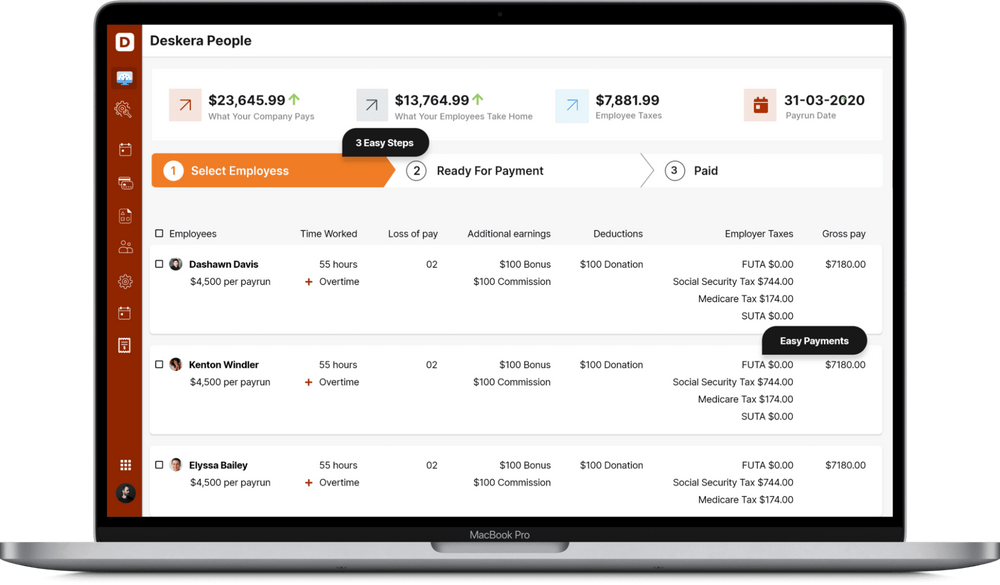
Related Articles:
